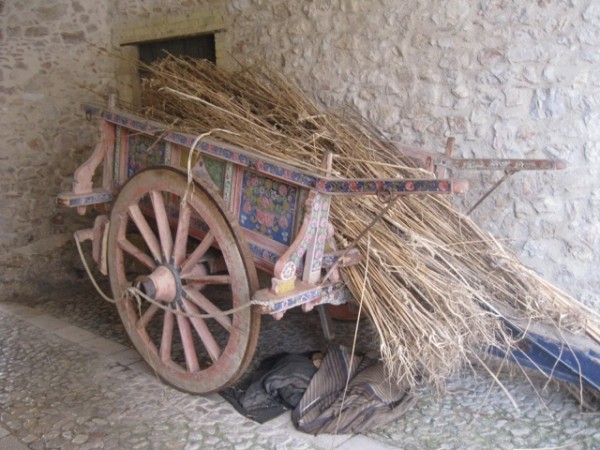One of them is Sant’Anatolia di Narco (pop. 350). They have a new Museo della Canapa (Museum of Hemp), tucked away in the labyrinthine medieval backstreets (designed for defensive reasons: you can’t shoot a crossbow around a corner!).
Young Eva walked us through the fascinating history of hemp cultivation in the Valnerina – and with passione. We learned about its cultivation, harvest (after soaking the stalks in the Nera River) and its use… not just for ropes and feed sacks but for bed linens, clothing and even the fasce (bands of cloth) used to wrap infants. The seeds were used to season salads or pressed into oil for lamps. Nearly every farm family reserved a plot of land for the cultivation of hemp, so essential was the plant.
On a walk through a Valnerina hill town, you might see perforated corbels jutting out over doors: once holding the poles where hemp was stretched out to dry. However, the cultivation of hemp was outlawed in 1970. Why? The European canapa is very similar to that of the Orient’s, cannabis indica. But thanks to this museum – and Eva’s passione – canapa’s place in Italy’s rural history lives on in this tiny mountain village.
